The state of Uttarakhand, India has all of the four Chardham Sites of pilgrimage. One of the most important rituals for the devotees of Chardham Yatra is to take a bath in River Ganges, the Yatra beginning at Haridwar, a sacred city. You can journey through these places listed below while you tour the four abodes.
The Char Dham Yatra 2021 is one of the most significant pilgrimage tours for the Hindus. Thousands of visitors and devotees visit these places each year. Devotees also check out sightseeing in and around these picturesque places. While there are some tours that are very tough some are simple treks. It is believed to bring 'moksha' to the devout Hindu pilgrim who takes this tour.
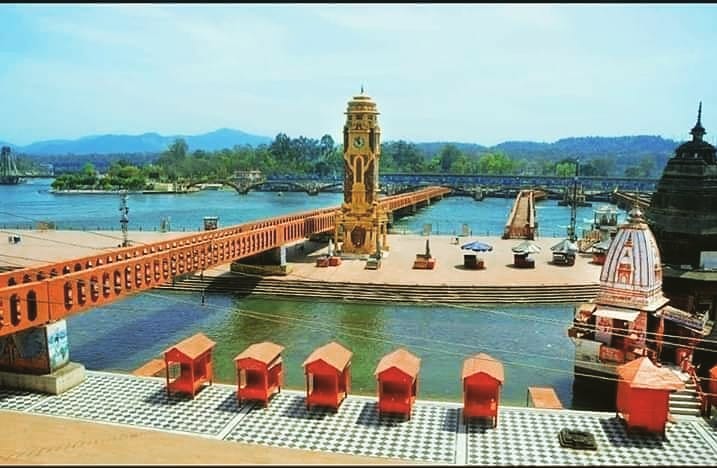
Also Read- Treks Around Chardham Yatra
As per mythological belief, King Bhagirath did a penance to Lord Shiva to help his ancestors’ souls out of the rebirth cycle. He did this at the Har ki Pauri. Just like he took a dip in the sacred waters of River Ganga, even the pilgrims and devotees take a holy dip at the River for the attainment of salvation of their ancestors.
Many pilgrims to Chardham Yatra visit the temple that is on top a hill as they believe that their wishes are fulfilled by the main deity there – Goddess Mansa Devi. There is also a tree considered magical as the visitors with a wish will make a wish and tie the tree with a thread. They return again to untie it if their wish is fulfilled. The route to approach the hilltop temple is by cable car ride.
This temple is also situated on the top of another mountain peak famously called Neel Parvat. From Mansa Devi Temple, the pilgrims can journey to this temple on a bus. This is another temple where it is believed that the devotees wishes will be fulfilled. It is dedicated to Goddess Chandika Devi. The temple is also known to be one of the Siddha Peethas of Haridwar region.
This is one of the most talked about and celebrated ceremonies in India. The illuminated banks of the River Ganga is an awe inspiring sight. The priests keep chanting and they hold giant lamps that even weigh around two kilograms too. Thewaters are illuminated with floating diyas and all this makes up a mystical charm of the holy site.
This temple situated in the town of Rishikesh is dedicated to Lord Shiva. Here, he is called Neelkanth, as it is believed as in the Puranas, that he took poison which came all the way from Samudra Manthan. And due to consuming this poison, he turned blue near his throat. Hence the name came ‘Neel – Blue and Kanth – Throat!
This is a huge temple complex that consists of 13 floor in Rishikesh. In each storey there is a different shrine dedicated to various forms of Lord Shiva. There are several hundreds of devotees visiting this temple which is one of the most famous temples in the town of Rishikesh. To reach this temple, the pilgrims have to cross the famous mythological bridge called Laxman Jhula.
This Ghat is another place where pilgrims take a dip considered to be holy. It is believed that it will wash away all of their sins as it is the point of confluence of three major rivers which are sacred to them – Rivers Ganga, Yamuna and Saraswati. At evening, there is also a huge ceremony that takes place here known as the Maha Aarti. The experience of the twilight air filled with incense, the sight of Aarti ceremony, the smell, etc. is magical.
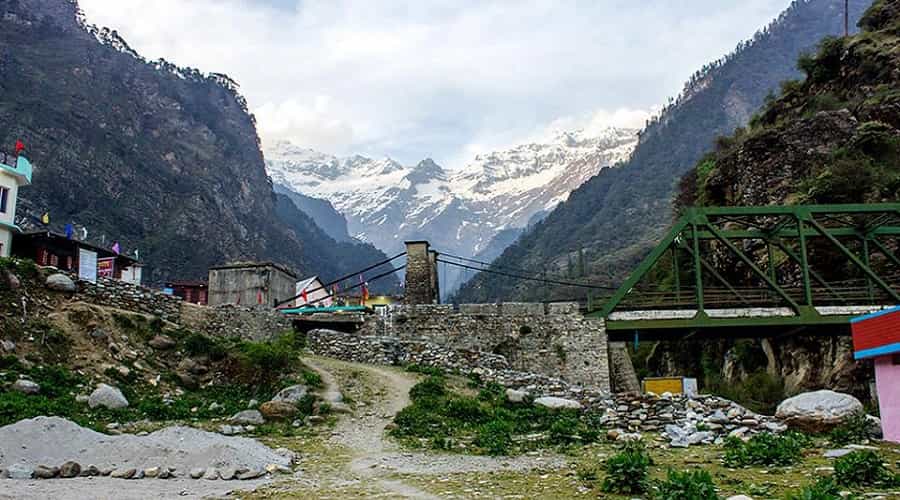
Via: Dehradun – Musoorie – Barkot
This place in Dehradun is one of the most picturesque places in the hill station. Moreover, it is enroute the pilgrimage site Yamunotri. Hence, before you go there, check this out for the different species of birds and great picnic park in pleasant climate.
This is a peaceful getaway while on your hectic pilgrimage tour to Yamunotri. Just take in the peace and quiet to give yourself some refreshment of body, mind and soul. The pleasant climate and nature abundant beauty of the place alongside makes this a must visit place to visit during Chardham. The Sahastradhara springs are known to have medicinal properties.
Find Some Popular Itineraries
Because thieves and robbers hid themselves here, it got the name Robber’s Cave. However, it is also known as Guchhupani famous for the water springs that flow through the cave. The uniqueness about this cave is that the flowing water disappears suddenly and then reappears at a spot ahead in the cave. So, the visitor can view various spots of water springs within the cave.
This beautiful waterfalls situated at a top hillstation in India called Musoorie at 6170 feet is 75 km distance. It also provides an excellent view of the Himalaya mountains covered with snow. Kempty waterfalls is one of the top attractions in Musoorie where you can also see other places such as Mall Road, Company Bagh, Gun Hill, etc. when you go for the Chardham Yatra in Uttarakhand.
Within 50 km distance from the pilgrimage site of Yamunotri, this tiny hill station is a must visit place to halt at. You can find some magnificent Garhwal Himalayan peaks here including the mighty Bandarpoonch Peak that is totally covered in white snow. There is also an ancient temple dedicated to Lord Shiva in this small town enroute to Yamunotri.
This place is surrounded by the snowy Himalayan mountains and thus serves as a base camp for various trekking trips including Dodi Tal, Darwa Top, and definitely Yamunotri. There is a small Hanuman Temple to stopover at during your visit to this nature abundant region. This place is also special as there is a confluence of two mighty rivers – Yamuna and Ganga Hanuman. Hire a taxi / jeep to Janki Chatti and then climb up 6 km to Yamunotri that is done by most tourists.
As mentioned earlier, this is the point from where the actual upward trekking to Yamunotri starts. This is also an amazing stopover where pilgrims can take a hot bath in the famous hot water springs here. It refreshes them for the further upward trek and also relaxes the stressed out body. From this point, there are also dolis and pony rides available for the weaker pilgrims for 6 km. Some of the best things to view here are the snow covered peaks, beautiful waterfalls, trek through dense forests, hot water springs, etc.
If you would like to see more places before trekking to Yamunotri, there is a beautiful small village called Kharsali that is just 1 km from Janki Chatti. One of the oldest Hindu temples dedicated to Lord Shani is here known as the Shani Dev Temple. This is the residing place for Goddess Yamuna for 6 months during winters when the Yamunotri temple is temporarily closed for winter season.
As the name suggests, Surya means ‘Sun’, and these water springs are ht water springs known for healing capabilities. In fact, the pilgrims to Yamunotri have to first take a dip in these hot waters and then they can proceed on Yamunotri Yatra. Here, you can witness how uncooked rice and potatoes can get cooked in these waters by tying them in a cloth and dipping in the hot water, so hot is this water here. Moreover, this is the darshan offered to the devotees after offering it at the temple at Yamunotri and they can take home remaining prasad.
It is a custom for the devotees of the Yamunotri to first worship the sacred natural rock which is reddish-brown in color and stands near the Surya Kund. This is done before paying reverence / worshiping the main deity ‘Ma Yamunotri’. It is also believed that with one simple touch of the divine stone at the shrine, the devotees will receive spiritual liberation or moksha.
Yamunotri Devi is worshiped at the winter place called as Kharesali village. traveling in a palanquin where she remains for the rest of winter months. During the auspicious time or the season of Akshaya Tritiya that generally occurs in April/May Goddess Yamunotri Devi is back at the Yamunotri Temple again.
Get VIP Darshan of Yamunotri Temple by - Yamunotri Tour Package from Haridwar
Although most of the pilgrims to Yamunotri return after offering prayers at the main temple, some stronger visiotrs like to trek up few more kilometers to the peak of the mountain. This is known as the Champasar Glacier which is the actual frozen source of the River Yamunotri.
If you are traveling from Barkot, this magical cave is enroute to Uttarkashi. Many pilgrims on the Gangotri yatra also visit this cave. The main specialty of this temple cave is the natural stone formation of Shivaling. It is said to be formed by limestone.
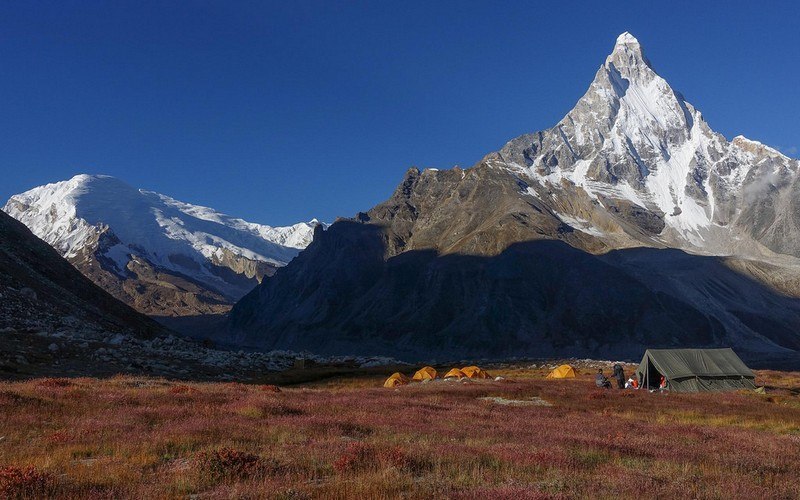
Also Read-Chardham yatra Opening & closing Dates
This is another famous temple situated in the district of Uttarkashi. You can also shop for pooja items as there are few shops around this place. There are statues of various other dieities here including Ganesh, Shiva, Parvati, and Nandi, etc. It is believed that Lord Vishwanath deity is taken to this shelter situated in Uttarkashi temporarily. It is also one of the oldest Hindu temples and is situated near the River banks of Bhagirathi.
Exactly in front of the above temple is the Shakti Temple. The devotees of Goddess Durga visit this temple and witness the massive trident held by the diety that signifies Shakti in this temple dedicated to the Goddess Durga.
This is one of the must visit places especially if you are going on the Gangotri Yatra as it is on the way to Gangotri. The surrounding area is also so peaceful and abundant in nature that you will feel to meditate here. Visitors to this place also get a magnificent view of the snowy Himalayas from here. It is situated roughly 200+ km distance from Rishikesh.Rishi Kund is a hot water springs where Gangotri pilgrims and devotees first take a holy dip here and then go ahead to worship at the main temple.
This is a beautiful small hamlet of Harsil that is roughly 70 km distance from the district of Uttarkashi. The River Bhagirathi also flows through this area which is 2600 meters above sea level. It is a place to visit during Chardham Yatra enroute to Gangotri. It gives peace of mind and soul when you see the plush meadows and greenery of the landscape around. If you tour in winter months then you can also see the procession of the diety of Gangotri carried to be at Mukhwa temple in Harsil. There are also many treks to undertake as there are quite a few trekking routes from here.
This village is situated very close to the previus town of Harsil, which is only 2 kilometers distance apart. It is famous for the vast acres of apple orchards and pilgrims get an awe inspiring view of the orchards streching all the way to the Gangotri route. There is another attraction at this village for which several devotees visit here – the Shiva Temple. The serene hamlet is set against the picturesque backdrop of the mighty Himalayan ranges on one side and rests on the banks of the famous sacred Ganges too. Visiting this place during Chardham yatra will give you much needed rejuvenation.
This is another village situated very close to the above location Dharali. This is also the temporary abode for Goddess Ganga who is worshiped in this place when the main Gangotri temple is closed for 6 months during winter. So, if you visit during winters, you can also visit the Ganga shrine at Mukhba Village. There are many beautiful things to witness in this small village such as rhododendrons, pine forests, old wooden huts, flower valleys, etc.
This is one of the most amazing valleys that you can find on your Chardham yatra enroute Gangotri. It is roughly 10 kilometers away from the pilgrimage point which is filled with tall pine trees. There is also one of the oldest Hindu temples known as Bhairon Temple in this area. It is nestled in the midst of the Jat Ganga and River Bhagirathi. You can see the River Bhagirathi flowing down the mountainous region.
Gangotri yatra package From Delhi
Do Dham yatra Tour Package Form Delhi
Gangotri Kedarnath Badrinath package

Traveling all the way to Gangotri yatra and not visiting the main shrine does not sound like a pilgrimage tour. So, visit the Gangotri temple to take blessings and also admire the surroundings of the temple as it is nestled in the midst of nature.
This Shivling is only visible when the climate is freezing temperature and water level is lower. It is otherwise submerged completely underwater and people believe this is where he sat and held the Ganges in his hair locks to save the earth.
The famous Surya Kund Falls is only half a kilometer away from the Gangotri shrine. People take a dip there and it is an amazing thing to see the temperature of the waters that go up to 88 degrees in the cold freezing temperatures. The waterfall gives an awe – inspiring view of the waters coming down from such a great height.
Beyond the beautiful waterfalls listed above is the Pandava Gufa, believed to be the caves in which Pandavas stayed in, after their battle before reaching heaven, according to the Mahabharata epic. This place is situated only 2 kilometers ahead of Suryakund Waterfalls in the dense forests.
This rock is the place where the ancient King Bhagirath offered prayers to Lord Shiva. This rock is considered sacred and holy to the Shiva devotees.
The origin of Ganges resembles the ‘face of a cow’ - Gaumukh was the name given to this place. Pilgrims and devotees take a dip in the waters of Gomukh glacier as they believe it to be sacred waters. Then they hike along to the Gangotri pilgrimage site. There are mesmerizing views of the glacier enroute. This is a must – visit place to see during the tour to Chardham Yatra.
Many of the trekkers, tourists, and even stronger pilgrims travel ahead of Gaumukh Glacier to the picturesque Tapovan and Nandanvan sites. From here, you get outstanding views of Shivling Peak that leaves you speechless and full of awe for nature. However, it is only advisable for the tough trekkers as it requires for them to be in perfect health both mentally and physically. Moreover, they must also be well equipped for any sudden accidental falls, natural calamities, snow storms, etc.
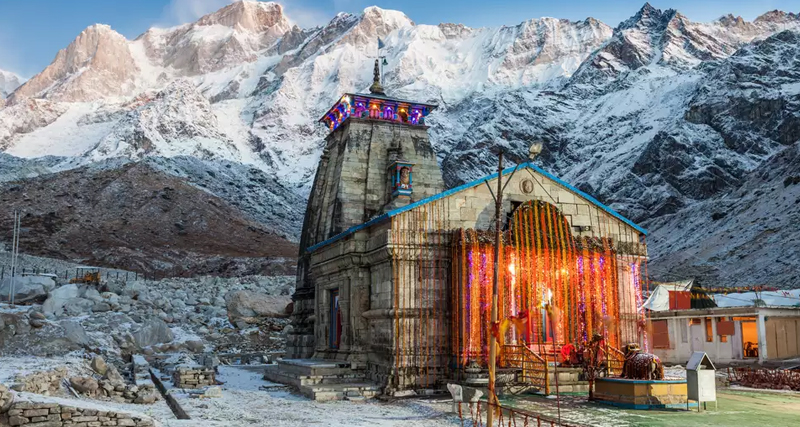
The third abode of the Chardham yatra is Kedarnath. From Uttarkashi there are two routes:
Route 1: Srinagar – Rudraprayag – Augustmuni – Ukhimath – Guptakshi – Sonprayag – Gaurikund - Kedarnath
Route 2: Gangotri – Uttarkashi – Tehri – Mayali – Ghanshali – Ukhimath – Guptakshi – Sonprayag – Kedarnath
There are a number of tourist attractions in this small village of Ukhimath. This is the place where Lord Kedarnath and Lord Madhyamaheshwar are kept in winter months because the main shrines of the two deities are closed in winter months.
This is the shrine where Lord Kedarnath and Lord Madhyamaheshwar are offered prayers in Ukhimath.
It is believed that this is the place where the belly portion of Lord Shiva fell when he ran from the Pandavas. This temple is also one of the ‘Panch Kedar’ temple groups.
This is at a towering altitude of 6000 feet above sea level providing outstanding views of snow covered mountain peaks around Kedarnath region. The main deity of this temple is Goddess Kali and other Goddesses like Saraswati and Lakshmi also. There are millions of followers and devotees visiting this temple which is crowded especially during the season of Navratri as it is believed that the main deity killed Raktabeej, a demon here. You can also find the statues of Ganesha, Nandi, Parvati, Shiva and the Shivlings here. The temple is known as "one of the 108 Shakti Peethas".
This ancient Hindu town is very significant for the Shiva devotees as it is here that he proposed to Parvati. There are other mythological tales associated with this place that are nestled in the beautiful Chaukhamba mountains of Garhwal Himalayas. Here are the top attractions of Gupt Kashi.
The temple constructed from stone is dedicated to Lord Shiva. The name itself means ‘God of Universe’. It is a common ritual to first take the darshan at the Vishwanath Temple situated at Guptkashi before moving ahead on the Kedarnath Yatra.
This temple is situated close to the Vishwanath Temple in Guptkashi. Inside there is a deity of Goddess Parvati and Lord Shiva and this is in a image of half man and half woman.
The main specialty of this Kund is that the waters of two rivers – Ganga and Yamuna come out in the water springs. The Shivaling is bathed with these two water springs.
You can visit another small hamlet call Sonprayag that has religious significance as it is located at the confluence of two sacred rivers – River Basuki & River Mandakini. Another significant attraction is the Triyuginarayan temple located in this region.
This temple resembles the Kedarnath Temple a bit as the structure somewhat makes its image. Many tourists and pilgrims to Chardham Yatra also trek up to this temple that was constructed by Adi Shankaracharya. It is famous for the flame that burns forever and ever in day and night. It is believed that the flame started burning from mythological times when Lord Shiva married Goddess Parvati. Their marriage ceremony is believed to have happened in a village called Triyuginarayan in Sonprayag region.
In order to reach the pilgrimage site of Kedarnath the pilgrims have to trek up 20 km. This place is the base point of this trek to Kedarnath. Gaurikund is situated only 15 km from the ancient town of Guptkashi. Before trekking to Kedarnath, the pilgrims first take a dip in the Gauri Kund hot water springs and pay homage in the temple before moving on to Kedarnath. The trek is through jungle forests and alongside River Mandakini. There are various options to trek as this is a lengthy distance. Pilgrims can go on doli and pony / horseback with paid services. There are also helicopter services to reach Kedarnath.
It is so significant to the Lord Shiva Devotees as there are more than 200 Lord Shiva temples within the region. The largest and highest is the Kedarnath Shrine where the devotees take the Kedarnath Yatra. This is one of the highest pilgrimage sites as it is situated over 11,000 feet above sea level.
The Temple is adorned by a gold Kalash on top, a wooden ceiling that keeps the place warm, and an enormous stone carved idol of Nandi at the entrance. Kedarnath is one of the 12 Jyotirlinga of Lord Shiva. The temple is categorized in to three major sections:
(i) Garbhgriha – This is the at the place where the pujas are conducted.
(ii) Darshan Mandap – This is the place where the Darshan is given to people.
(iii) Sabha Mandap – This is the section where the Lord Shiva devotees gather
This trek is for the expert trekkers and brave visitors. It takes steep slopes and challenging altitudes before you reach the beautiful blue colored Vasuki Tal. It is situated in the mountains of Himalaya 8 km from Kedarnath temple and is open for visitors 24 hours a day during the visiting season. Several pilgrims and tourists undertake this adventure with dense forest land visible in addition to the picturesque snow – peaked Himalayas standing in the background.
It is believed that Lord Bhairavnath is the deity who guards the holy town of Kedarnath and the Kedarnath temple. So, this temple is dedicated to the main deity Lord Bhairavnath. The trek which is over 1 km from the Kedarnath temple upwards provides outstanding views of the Kedarnath valley from this temple point.
After seeing all the sightseeing places in Kedarnath and finishing with Kedarnath yatra, the last and final destination of Chardham Yatra is the Badrinath yatra. There are again two routes to this yatra:
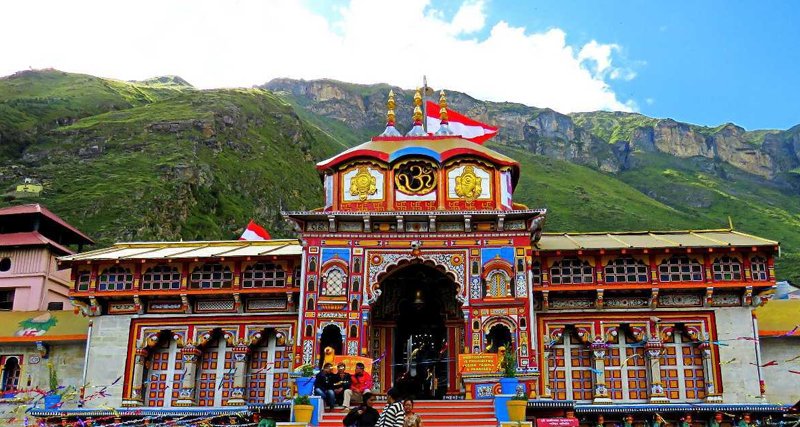
Badrinath is situated at a towering altitude of 3133 meters above sea level, towards the right side of the River Alaknanda. Devotees on the Badrinath Pilgrimage Tour also witness the Nar Peak and Narain Peak. The Badrinath Yatra is mostly taken by devotees and followers of Lord Vishnu. In addition to the ‘Four Abodes’ this place is also the largest among the five ‘Badris’ well known as Vishal Badri.
This is a tiny hill station with multiple adventure options to take part in. It is very close to Ukhimath. Some activities include rock climbing, trekking, and rappelling. There are also major sightseeing spots to visit in Chopta enroute Badrinath in Chardham Yatra.
This is one of the oldest Hindu temples which is over 1000 years back. Dedicated to the deity of Shiva, it makes up one of the shrines of Panch Kedar group of temples.
This is an adventurous trek through thick oak forests, lush meadows, and rhododendrons. Moreover, you get the sight of major peaks of Kedarnath including Trishul, Nanda Devi Peak, and Chaukhamba from here. It is only 3 km moderate trek from Tungnath temple.
Close to Chopta is a district called Chamoli where there is a Gopeshwar village. This temple also dedicated to Lord Shiva is known as Gopinath temple. It is known to house a ‘trident’ thrown by him.
This is one of the Panch Prayags that sits in the confluence of River Mandakini and River Alaknanda in the Chamoli district. Many pilgrims on the way to Badrinath visit a small temple situated in this place. It has the significance of some mythology according to the Puranas.
This is one of the best stopovers enroute Badrinath and roads and you can only travel on these roads in the daytime as it is closed at night. This is a must visit place on a Chardham tour. It is also the route to Auli – the skiing hub and winter adventure sports. A cable car ride for 3 km distance can be taken to connect to Auli. This place also serves as a base trekking site for trekkers to Hemkund Sahib and Valley of Flowers. These are the major attractions in Joshimath.
During the Diwali season, the main Badrinath temple complex is closed. Hence, Badri God resides at this temple until the time of Akshay Tritiya. The main deity here is Vishnu in the image of a half human and half lion called Narsingh.
Founded by Adi Shankaracharya this sacred place houses the Rajarajeshwari Devi temple and temple for Badrinath.
This is one more ‘prayag’ of the Panch Prayag group. The Vishnuprayag is nestled amidst the confluence of the Alaknanda and Dhauliganga Rivers, both in the Chamoli district. The confluence of these two rivers also has religious significance. Many of the devotees and pilgrims take a holy dip here in Vishnu Kund and pay homage at Vishnu Temple too.
This place holds great significance for the Hanuman followers as it is believed that he mangled Bheem’s ego here at this place. It is also believed that a genuine and deep devotee will have his wish fulfilled here. This is the ancient temple enroute to Badrinath.
There is an ancient temple known as the ‘Yog Dhyan Badri Temple’ dedicated to Lord Vishnu. It is specific to the form of Vishnu in meditation posture or ‘Dhyan Mudra’. This temple is also known as one of the seven abodes or ‘Sapt Badris’ of Lord Vishnu.
The pilgrimage site of Badrinath is one of the most ancient places of worship in India for Hindus. It is the final of the four pilgrimage sites in the Chota Chardham Yatra. Here are the top attractions at Badrinath.
Badrinath is situated at a towering altitude of 3133 meters above sea level, towards the right side of the River Alaknanda. Devotees on the Badrinath Pilgrimage Tour also witness the Nar Peak and Narain Peak. The Badrinath Yatra is mostly taken by devotees and followers of Lord Vishnu. In addition to the ‘Four Abodes’ this place is also the largest among the five ‘Badris’ well known as Vishal Badri.
Badrinath Kedarnath yatra From Haridwar
Gangotri Badrinath Kedarnath yatra Package
There is a deity of black saligram stone in the main Badrinath shrine. Here, Lord Vishnu is revered in the form of Nar and Narayana.
It is believed that the waters of these hot springs has curative powers. In order to enter the main shrine, the pilgrims first need to take a dip in the hot waters of Tapt Kund.
This is believed to be the place where Adi Shankaracharya found the idol of Lord Vishnu when it was first erected in the Badrinath temple. This is also a sacred Kund or hot springs where Narad Muni wrote Bhakti Sutra here.
On the NH-58 this ‘last Indian village’ is situated at an elevation of 3200 meters above sea level. It is nestled in the midst of mighty Himalayas on the banks of sacred River Saraswati. The Village is easily accessible from pilgrimage site, Badrinath as it is just 3 – 4 km distance from here. The ‘last tea shop of India’ and many attractions in this village are here including the Vasudhara Falls, Bheem Pul, and Vyas Cave. This is the village that marks the Tibet / China and India border. Hence this is known as ‘Last Indian Village’.
This rock bridge made out of natural rock is believed to be constructed by the mighty Bheem. They say that he laid a mighty huge stone on the River Saraswati and used it to go to heaven.
This river is also known as the ‘lost river’ as it dried up hundreds of centuries ago. However, a small stream of water that flows into River Alaknanda through rocks and mountains in Mana Village, is believed to be the lost River Saraswati. It holds a religious significance that the Rig Vedas were composed at these banks of Saraswati.
These beautiful waterfalls from a height of 400 feet in Mana Village is a magnificent sight. Situated just 4 km from the town of Badrinath it is one of the best places to visit in Badrinath. It is not only an adventure point for pilgrims but holds religious significance too. It is believed to be the final resting place before Swargarohini for the Pandavas.
| Packages | Days | Booking |
|---|---|---|
| Chardham yatra By Helicopter (Yamunotri, Gangotri, Kedarnath, Badrinath) | 5N / 6D | More |
| Chardham yatra By Helicopter (Yamunotri, Gangotri, Kedarnath, Badrinath) | 2N / 3D | More |
| Dodham yatra - By Helicopter (Kedarnath, Badrinath) | Same Day | More |
| Same Day yatra - By Helicopter From Dehradun (Kedarnath) | Same Day | More |